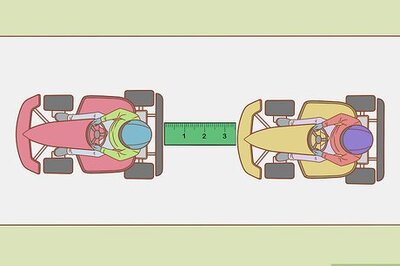
views
An unmanned Antares rocket exploded seconds after liftoff from a commercial launch pad in Virginia on Tuesday, marking the first accident since NASA turned to private operators to deliver cargo to the International Space Station, but officials said no one was hurt. The 14-story rocket, built and launched by Orbital Sciences Corp, blasted off its seaside launch pad at the Wallops Flight Facility at 6:22 p.m. EDT/2222 GMT carrying a Cygnus cargo ship for the space station. It exploded in a huge fireball moments later.
Orbital Sciences stock was down 12.74 per cent after hours, or down $3.87 at $26.50. The cause of the accident was not immediately known, said NASA mission commentator Dan Huot.
Huot said there were no reports of any personnel in the vicinity of the explosion. An Accomack County Sheriff's spokeswoman added, "As far as we know, all personnel are accounted for and everyone's OK."
Orbital Sciences said in a statement, "We've confirmed that all personnel have been accounted for. We have no injuries in the operation today."
NASA launch control said damage appeared to be limited to the launch facility and rocket. The Antares rocket has been launched successfully on four previous missions. "This has been a lot of hard work to get to this point," Orbital Sciences Executive Vice President Frank Culbertson told the launch team just before liftoff.
Launch had been delayed one day after a boat sailed into a restricted safety zone beneath the rocket's intended flight path.
Virginia-based Orbital Sciences is one of two companies hired by NASA to fly cargo to the station after the space shuttles were retired. Tuesday's planned flight was to be the third of eight under the company's $1.9 billion contract with NASA.
The second US supply line to the station is run by privately owned Space Exploration Technologies, or SpaceX, which is preparing for its fourth flight under a separate $1.6 billion NASA contract.
Outfitted with a new, more powerful upper-stage engine, the Antares rocket launched on Tuesday carried a Cygnus spacecraft packed with 5,055 pounds (2,293 kg) of supplies, science experiments and equipment, a 15 percent increase over previous missions.
Cygnus was to loiter in orbit until Nov. 2, then fly itself to the station so astronauts can use a robotic crane to snare the capsule and attach it to a berthing port. The station, a $100 billion research laboratory owned and operated by 15 nations, flies about 260 miles (418 km) above Earth.
In addition to food, supplies and equipment, the Cygnus spacecraft was loaded with more than 1,600 pounds (725 kg) of science experiments, including an investigation to chemically analyze meteors as they burn up in Earth's atmosphere.
The Cygnus also carried a prototype satellite owned by Redmond, Washington-based startup Planetary Resources Inc., which is developing technology to mine asteroids. The satellite, designated A3, was to be released into space by a commercially owned small spacecraft launcher aboard the station.




















Comments
0 comment